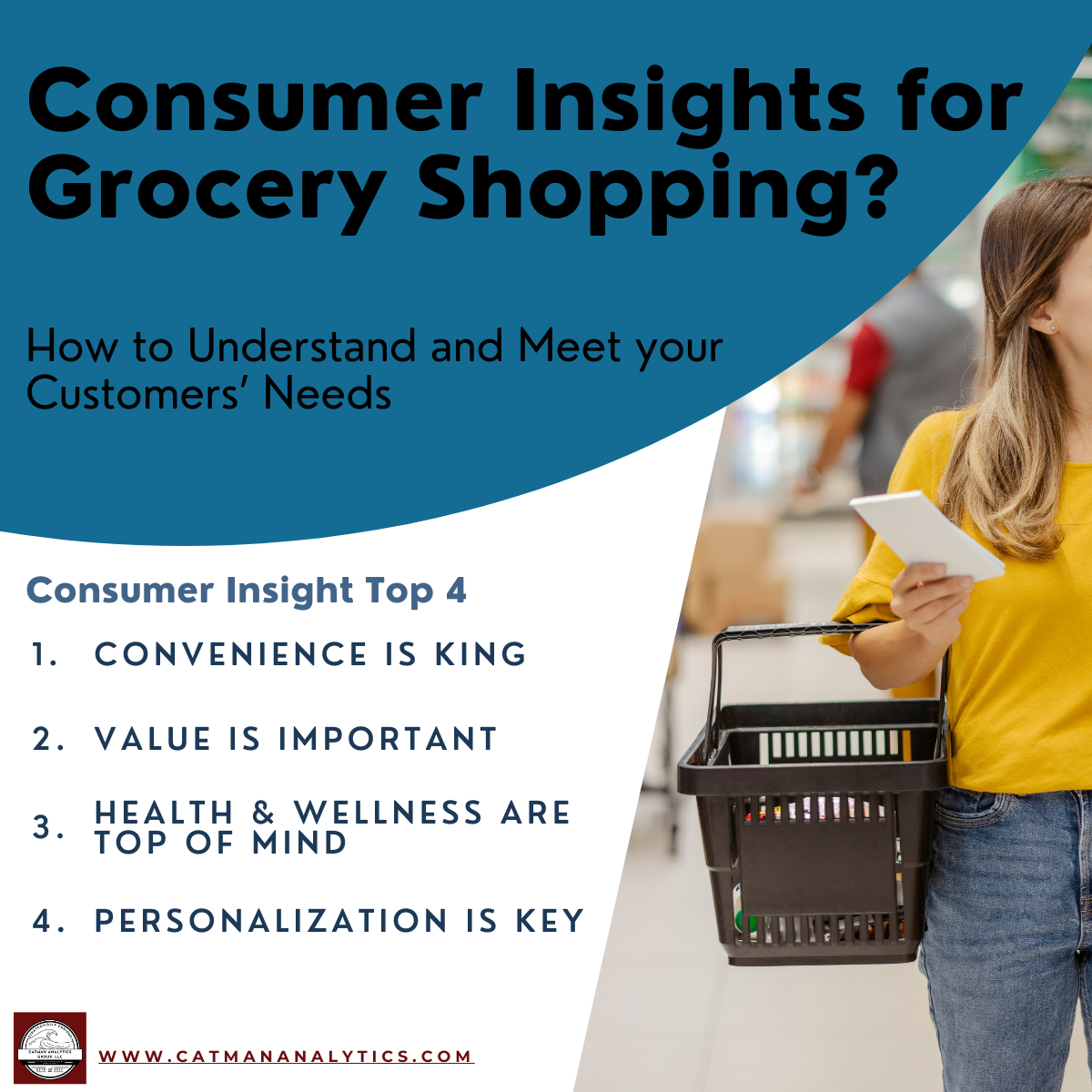In the fast-paced world of consumer-packaged goods, knowing Consumer Insights is essential for success. What are their needs, wants, and motivations? Developing strategies around this helps to develop products, services, and marketing campaigns that are more likely to resonate.
More importantly, the grocery shopper is facing a complex and ever-changing landscape of choices. To stay ahead, retailers must understand their customers’ shopping habits and preferences.
Top 4 Key Consumer Insights for Retailer to know:
Convenience is king. Customers want to shop quickly and easily.
- What to do: Identify where customers are most likely to order groceries online for curbside pickup. Then, make curbside pickup even more convenient. For example, create dedicated parking spots or let customers text when they arrive so their groceries can be brought out to them right away.
Value is important. Customers want good value for their money.
- What to do: Identify the products that customers are most price-sensitive to. Then, use this information to develop targeted promotions for these products. For example, offer a weekly “buy one, get one free” deal on a popular item or create a loyalty program that rewards customers for purchasing certain products.
Health and wellness are top of mind. Customers are increasingly interested in healthy and nutritious foods.
- What to do: Identify the types of healthy foods that your customers are most interested in. Then, use this information to expand your selection of healthy foods and to develop educational materials about healthy eating. For example, create a section of your website or store that is dedicated to healthy recipes or offer cooking classes on healthy meal preparation.
Personalization is key. Customers want to feel like they are being treated as individuals.
- What to do: Identify the specific products and services that each customer is most interested in. Then, use this information to send personalized recommendations to customers via email or social media. For example, recommend a new product that a customer has never tried before or offer a discount on a product that a customer has purchased in the past.
SO, what, consider these Consumer Insights Strategies to Improve Your Business
Develop new products and services that are tailored to your customers’ needs.
- Strategy: Use data analytics to identify the types of products and services that your customers are most interested in. Then, develop new products and services that meet these needs.
- Example: Use data analytics to identify the types of meal kits that your customers are most interested in. Then, develop a new line of meal kits that are specifically designed for families with young children or for people who are following a specific diet.
Improve your marketing campaigns by targeting your messages to specific customer segments.
- Strategy: Use data analytics to identify the different types of customers who shop at your store. Then, develop targeted marketing campaigns for each customer segment.
- Example: Use data analytics to identify the different types of customers who shop at your store. Then, develop a marketing campaign that is specifically targeted at millennials or at people who are interested in healthy eating.
Optimize store layout and merchandising to make it easier for customers to find what they need.
- Strategy: Use data analytics to identify the products that your customers are most likely to buy together. Then, place these products next to each other in the store.
- Example: Use data analytics to identify the products that your customers are most likely to buy together. Then, place bread and milk next to each other or place cereal and breakfast bars next to each other.
Improve customer service by focusing on the areas where your customers need the most help.
- Strategy: Use data analytics to identify the areas where your customers are most likely to need assistance. Then, staff these areas with more employees or provide additional training to employees in these areas.
- Example: Use data analytics to identify the areas where your customers are most likely to need assistance. Then, staff the checkout lines with more employees during peak hours or provide additional training to employees in the produce section so that they can help customers choose the freshest fruits and vegetables.
My Take
By understanding and meeting their customers’ needs, grocery retailers can create a more positive shopping experience and build stronger customer relationships. This can lead to increased sales, loyalty, and profitability.
What consumer insights are you acquiring and what are you doing about it?
Challenge your insights teams to this while you plan 2024, else get in touch with us @catman analytics group, to help you acquire insights, develop strategies, and further optimize your assortment, shelf, merchandising, and promotions.
For more on Category Management, Consumer Insights, Shopper Insights and Surfing Life Lessons follow us here or on my Linkedin page!



Leave a Reply